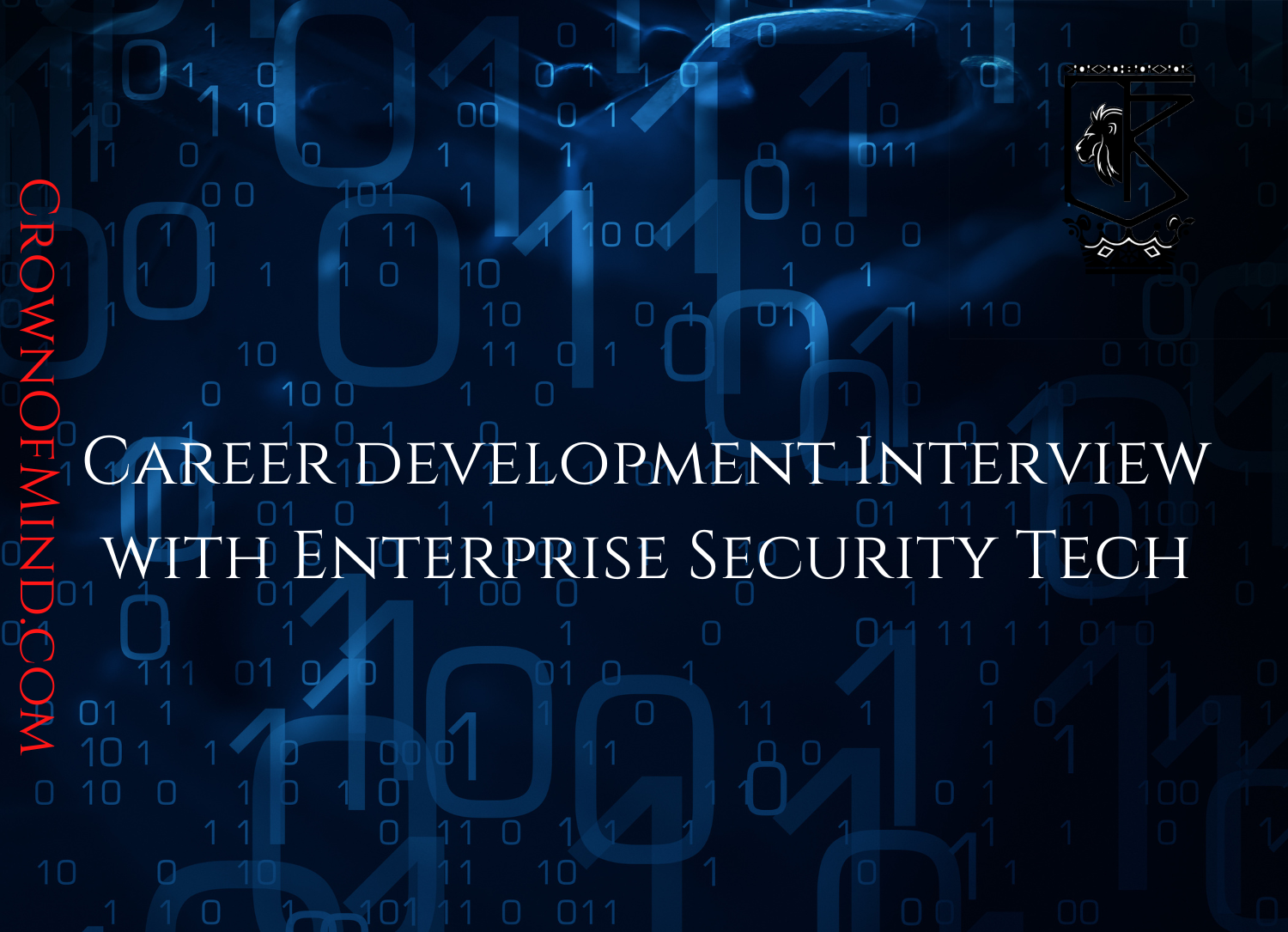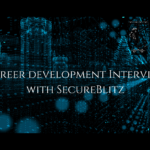Link: https://www.enterprisesecuritytech.com/post/how-to-get-hired-for-a-cybersecurity-job
How To Get Hired for a Cybersecurity Job
We recently spoke with Trent Rhodes, a career coach manager with tech education provider Fullstack Academy, about how to brand yourself when looking to enter or level-up in the cybersecurity industry.
Amid America’s “Great Resignation,” workers are quitting their jobs and considering career changes at an incredible rate. Nearly 9 out of 10 company execs say they’re seeing higher than usual turnover. And 50% of U.S. workers intend to make a career change, according to an Oct. 2021 report conducted by Harris Poll. Fullstack Academy has seen this firsthand, as many of its students are career changers looking for a flexible way to learn new tech skills.
Check out these insights and tips from Trent:
As career coach at Fullstack Academy, what is the number one challenge cybersecurity graduates face when searching for a job?
The main challenge tends to be internal rather than external: developing confidence transitioning into a new industry. The program technicalities and requirements are straightforward. The certifications to acquire are known. The hard skills are explicit.
What isn’t so clear is how the job search will develop, who that right contact will be, if they feel good enough to apply for the job when it comes, how well they’ll perform on the interview, which company will make the offer, etc. This deals directly with the alum’s mindset.
What does it mean to brand yourself and why is it important when making a career change?
Branding for individuals is similar to company branding; it’s an activity that cultivates a reputation, being known or associated with something and building relationships centered around it.
Before a professional commits to a new line of work, their reputation already exists. If the individual excelled as a sales manager for the last seven years, it’s likely their existing relationships acknowledge this. Colleagues, friends and peers associate the career changer with their former work life, including all of the skills and accomplishments that entails.
Making a career change asks a professional to take charge of realigning their skills and abilities within a new career frame. Doing so will take work to also convey this shift to those who are already familiar with their previous profession(s) and confidence to connect with new people about competence in their new career.
We’re in an advantageous time where we have access to platforms that can serve as our personal media resources. Using these tools wisely, we can more effectively direct our reputation and re-establish relationships in our chosen self-image.
When we actively take part in this process, we also help recruiters and employers who are trying to find us, whether through search engines or social media or events, by signaling our strengths, contributions and how we can be assets within an organization.
What should someone seeking a job in cybersecurity have in their portfolio?
It’s important to first understand the purpose of a portfolio. While a resume’s role is to secure an interview, a portfolio’s role is to show your value and relevant experience through a body of work. This can be presented on a website or in a document, similar to a detailed CV. For those who have neither, LinkedIn can act as their first portfolio. If the portfolio is a website, provide a downloadable PDF.
As for what to include in the portfolio, an “about” section will help the viewer understand your purpose, or your reasoning for investing time and effort in this industry. It can be personable, explained as if speaking to someone directly in the first person. This is also a valuable opportunity to share your written elevator pitch.
A “project section” is vital, as it is where you share your work or demonstrate your skills. This section can also include events and hackathons you have participated in.
Be detailed about the who, what, where, when and why for these experiences. Because online portfolios act as passive branding tools, they are going to work for or against you when you’re not around. Give your best effort to make this a quality section. The details give attention to your thought process, problem assessment, learning and problem-solving capabilities.
Lastly, a “contact section” will help visitors know how to message you should they want to connect further.
Why are transferable skills so important, particularly to the cybersecurity industry?
Their transferability makes them valuable across industries and roles. For cybersecurity career changers, carrying transferable skills into the industry is inherent in their experience.
Whether your previous career was in accounting, administration, finance, sales or engineering, the time invested in past roles likely helped you develop skills and character strengths that are applicable to work in cybersecurity.
Because cybersecurity involves deep work in analysis, foresight, reflection, pattern recognition, and conveying relevant information within team settings, any experiences that strengthen communication skills and critical, agile thinking are particularly appreciated.
How do you recommend career changers identify and convey their transferable skills?
The first step is to acknowledge that all career changers have past experiences to reflect on, whether from previous employment or volunteer work. It can be tempting to shun these experiences and believe they’re irrelevant but that’s not the case. Going through the process of personal branding, my hope is that more candidates begin to see the full breadth of their professional experiences as worthy of acknowledgment.
Next is to know what the general transferable skills are. A quick Google search can bring up many of them; I’ll highlight a few: communication, teamwork, leadership, resourcefulness, intrinsic motivation and time management. Here’s a breakdown of sub-skills within each of these that may spark ideas of how you’ve exemplified them:
Teamwork: experiences involving conflict resolutions, planning, being trusted with a task by teammates or being part of an affiliation.
Leadership: experiences receiving increased responsibilities, being a voice for others or creating something new and pitching the idea.
Communication: experiences resolving team conflicts, delivering presentations, speaking on panels at conferences, writing correspondence that produced a result.
Resourcefulness: experiences solving a problem after a setback, any experiences that generated more strength, clarity, knowledge or overall improvement.
Time Management: experiences managing a project, completing projects within a given deadline or supporting others to meet deadlines.
Intrinsic Motivation: experiences to show independent learning, discovering solutions without being told, having a sense of mission.
To discover these examples, return to your resume, portfolio or LinkedIn and reflect on your pre-cybersecurity roles. You can also ask peers and past colleagues about their experience working with you to gain additional perspective.
Scenario-based responses tend to be effective because they act as the proof for a skill. Here you can apply a STAR method, which highlights the situation, task, action and result. Showing comfort with discussing specific examples shows employers a candidate invested the time to genuinely contemplate and integrate their relevant experiences.
How can job seekers create and perfect their pitch?
When creating your pitch, give attention to three areas: the past, present and future.
Include a summary of your qualifications and experience, leaning on the transferable skills you’ve gained. For example, if your past profession was as a salesperson, highlight the communication, persuasion and client research skills you honed to understand the product / service user. This will convey your ability to develop from experiences and avoid the habit of company bashing.
Ask yourself, “What did I learn from the experience?” rather than, “Why can’t I stand being there anymore?” Something provoked the desire to switch industries – your “Aha moment.” What motivated you to do so? This can lead you into describing the present, which can include current cybersecurity experience.
When talking about the future, consider your goals. Where do you see yourself in the coming months or years? Is there an aspiration you have where you make your best contributions? Phrases that can help lead you into the future include:
“Now my goal is…”
“I’m looking forward to…”
“In the future I’m excited to…”
“With your company I’m motivated to…”
“In this position my goal is to…”
The final step is to practice, practice and practice more. As with any performance, a pitch or interview is also a performance and to execute in a way that feels natural and integrated will require rigorous rehearsal.
How should your personal pitch change based on the networking situation (career fair, industry event, in-person interview, etc.)?
Know your environment. Research. Context will make the difference in how the pitch can be most effective.
At Fullstack, we coach our students on the necessary flexibility of their personal pitches. To convey the message you need at the right time in the right environment, it’s important to adapt the pitch accordingly.
Common circumstances a job seeker may find necessary to adapt to include:
Career Fairs: If you think about the traditional career fair style, one large event might host many employers and even more candidates. Think of your classic Eventbrite setup, where you can simply visit the page online and RSVP.
Some of these events have no price attached, so you might find several hundred people signed up for events like this virtually or onsite. When the structure is this large, you may have limited time to connect with an employer. Your pitch can serve best by being brief and to the point with an emphasis on continuing the conversation beyond the fair. If you like what you hear from an employer, ensure you obtain the contact information so you can use follow-up methods post-event. You can ask, “How can I contact you after the event?” or if onsite, “Do you have a business card?”
Industry Event: This event structure may host several speakers specialized in an area – a cybersecurity panel for example. The speakers will be known ahead of time, likely highlighted in the event posting. This gives you lead time for research. Visit their LinkedIn pages and company websites, see if they’re visible on social media and if they have other presentation content online.
If unsure of what their job titles mean, you can look up example descriptions for familiarity. You’ll have a reasonable sense of what they’re about going into the event.
Since they will be speaking, you may not have an immediate opportunity to pitch them. But if there is a Q&A session, you can use that time to deliver a brief introduction and pose a question.
Like the career fairs, you’ll want to probe for a way to obtain contact information to reach out post-event. Ideally, their LinkedIn profiles can suffice, and you can deliver a written pitch version in your message as an InMail.
General Networking: Outside of the immediate job-focused conversations, it’s also important to have a solid pitch introduction for when meeting new industry peers.
These conversations tend to not start with the classic, “Tell me about yourself,” because they aren’t traditional interviews. But when meeting someone for the first time, there is a natural curiosity in the dialogue and a job seeker will inevitably have to introduce themselves many times to industry people.
Since these might develop into broader conversations, the job seeker can relax into a more in-depth pitch and be prepared to explore more of their past, present or future as natural questions arise.
In-person Interviews: Pitching is most associated with direct job interviews. With foreknowledge of when the interview is scheduled and who you’ll be meeting with, you can do your due diligence and research the company and individuals in preparation. An interview pitch should be direct, with a tailored story relevant to the role and organization. In practice we strive for 60-90 seconds.
Up to 80% of jobs are filled through personal connections, but it can be difficult to establish those connections. What’s the best way to request an informational chat with a professional in the industry?
Regarding mindset, there may be hesitation about this path even though it’s generally known that networking produces high return on investment.
Some reasons include not wanting to intrude on another’s time, being a bother to a person or the fear of not being responded to, among others.
Openness and courage are valuable character strengths here, which will help you, the job seeker, leap over the fear hurdle. Additionally, being competent in effectively reaching out and requesting meetings can increase confidence. It’s subtle, but appointment booking is a skill.
The first step is to use a booking platform such as Calendly, which allows you to set up a personal schedule for free. You can select available times to share with contacts. This will drastically cut down on the online back-and-forth communication typical of messengers and email. The less touch points needed to secure the meeting, the better.
Be direct about your intention without being pretentious or transactional. For example, you can introduce yourself briefly and share how you learned about the contact.
Next, state your intention. Do you want to learn about the person’s professional experience? Their industry knowledge? Interest in a specific opportunity or position? Feedback on your resume? Thoughts on your recent project?
Lastly, be specific about your timeframe. For example: “Would you be available for a 15-minute chat this week to share your knowledge about the position? Feel free to book a time on my Calendly: www….”
Networking is a long-term investment skill. Expecting immediate results can lead to transactional conversations that a contact can sense and be put off by. It can also frustrate the job seeker by creating unrealistic expectations.
Consider these opportunities beneficial for a potential job at the moment but also for the assemblage of alliances, friends and peers who can be in your corner over the lifespan of your career. This involves consistent demonstrations of trust, reciprocation and a worthy character.
Any other tips for those looking to land their first cybersecurity job?
The job search is a long-term process as with any industry. You’ll be challenged to change, become a new person, acquire new skills and step into unfamiliar territory; don’t be so hard on yourself going through the rollercoaster ride. Take each experience as a learning moment. I tend to say to my alums: If you decided to walk from New York to California you’d eventually arrive. It might hurt. You might feel tired. Might have to take several stops at hotels and reroute. But eventually you’d get there if you never stopped. The only failure occurs when you decide to quit.
When you secure the cybersecurity job, you’ll be able to reflect and see how everything that happened was necessary to help you reach the goal.










